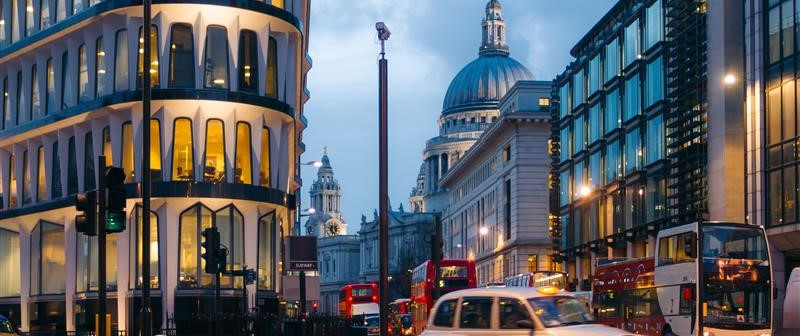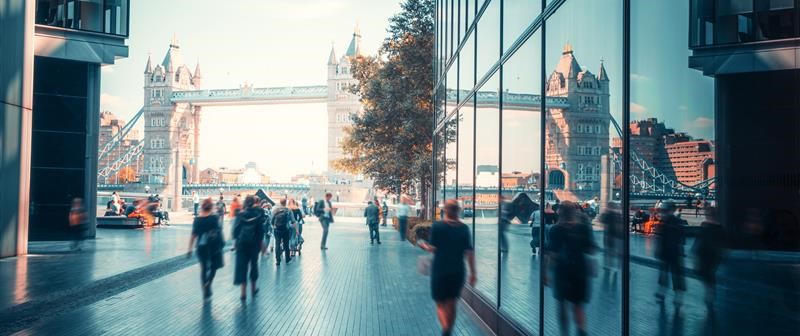If you look back over modern history, arguably China experienced the greatest economic miracle in the shortest possible timescale. However, ever since the pandemic, China has struggled to navigate the balancing act of restricting the spread of the disease without damaging the immense financial progress it has achieved in the preceding 40 years.
International investment markets appear to have begun to scrutinise the latest trends and economic data, highlighting concerns about the central government’s responses and whether they will be the effective medicine required to put China’s future growth prospects back in good health. What might this mean for investors and future market sentiment? Simon Durling, from Santander Asset Management, shares his thoughts in this week’s State of Play.
Key highlights from this week’s State of Play
- A brief history behind the Chinese economic miracle
- The challenges of economic maturity and transition
- Ongoing impact of the pandemic
- Market update focused on China
The Chinese 40- year economic miracle
Following the death of Chairman Mao Zedong in 1976, China’s new leader Deng Xiaoping, held a leadership meeting on 18 December 1978, officially known as the Third Plenary Session of the 11th Central Committee of the Communist Party of China.1 At the time, China was one of the poorest nations in the world after a long self-imposed isolation, with the average annual income of just $300.2 He embarked on radical changes abandoning the constraints of the previous ideology, unleashing an extraordinary economic journey over the next 40 years to become the world’s second largest economy. The speed and size of the transformation is unmatched in history.3
China gross national income
Following economic reforms and opening up trade with the outside world, China has succeeded in lifting 850 million of its people out of poverty and growing its share of the global economy from just 1.5% to over 18% by 2021.4 Much of this transformation has been driven by infrastructure, whether expanding or modernising existing cities, or in some cases building entirely new cities on a monumental scale, or creating manufacturing capacity for the world’s leading companies. In addition, albeit not politically, China has embraced market capitalism and entrepreneurialism, bringing with it economic growth and huge wealth. China now boasts the second largest population of billionaires, with just shy of 700 if you include the 71 in Hong Kong.5 The consistent annual growth since 1978 is unmatched, and when compared alongside the US (chart below), the world’s largest and wealthiest economy, it highlights the remarkable prosperity created in such a short space of time.6
Economic maturity and transition
In some respects, explaining how much the Chinese economy has matured and transformed from the early reforms in 1978 to the present day is lengthy, complex, and impossible to fully explain in a short weekly update. However, I want to briefly touch on a couple of stories to explain the challenges facing China today and in the future. The last four decades of economic progress have not only been about China, but also about their role in globalisation.7 This economic transition saw many corporations looking to grow at the same time as keeping down their production costs, and they looked East to try to achieve this. By relocating the manufacture of products to emerging markets like India and China, where land, natural resources and wages were much cheaper, they were able to keep their prices down and their profits up. For the global economy, the role globalisation played in keeping inflation low and costs down for consumers cannot be underestimated. The recent pandemic and the disruption it caused to the usual flow of globalised trade, and the knock-on effects this has had on inflation everywhere highlights how important China was and remains to Western economies.
To provide an insight to challenges facing China’s maturing economy and the implications for the rest of the world, the story about Zhengzhou in central China may help provide some clues. If you own and use an iPhone, there is a strong probability that your device was manufactured at the colossal factory complex a few miles outside the city. The factory is owned by Foxconn (formerly Hon Hai Precision Industry Co Ltd), which employs 1.3 million people in China, approximately 200,000 of whom work in Zhengzhou, nicknamed ‘iPhone City’.8 The factory was built in 2010 almost exclusively to serve Apple’s iPhone production needs — with $600 million in assistance from the provincial government.8 At one stage the factory had 300,000 workers, producing a staggering 500,000 finished iPhones per day or 350 phones per minute.9 It could be argued that some of Apple’s continued success and dominance in the smart phone market is built around the benefits of making their product in China and distributing it around the world.
Clearly, not all the benefits have been retained by Apple, as employee wages have risen substantially since the factory was built, reflecting much of the economic journey in China. Now that wages have risen, in no small part due to the impacts of the pandemic and the costs of moving finished products around the world have risen, the challenge for Apple, China, and the rest of the world is how they adapt to the maturing Chinese economy. The clear benefits of low wages and low distribution costs from over a decade ago have been heavily diluted. Many company responses during the pandemic was to onshore their capabilities and adapt to lockdowns and restrictions, which often were not aligned. Much of the democratic world was in lockdown when China wasn’t and vice versa. Shipping containers were scattered all around the world, causing long delays in the supply of products and helping push up prices as supply was unable to meet demand.10
Ongoing impact of the pandemic
To reduce future risks and retain maximum control, corporations often decide to navigate their future by withdrawing from China, either in part or altogether. Some of these decisions were also motivated by politics. The Trump era of America first, where his ongoing trade war with China triggered US government incentives for companies looking to build new factories to be persuaded to keep these plans at home, has probably hurt the Chinese economy more than they are willing to acknowledge. Also, their zero-tolerance approach to COVID-19 meant that planning for the arrival of the right number of supplies created significant disruption to global supply chains. Their approach of total lockdown every time there was an outbreak appeared to work successfully when the virus first emerged, but now, more than three years later question marks remain over the validity of their strategy.
Market outlook for China
Much of China’s success over the last four decades has been due to the ability of the various regimes to accommodate a more market-oriented system supported by a central government that incentivizes economic development. Since the appointment of Xi Jinping as the Communist Party President in 2012, his growing power has contradicted this previously successful formula.11 In recent years, China’s governance has shifted in an anti-growth direction as Xi Jinping wants increased control over all aspects of Chinese life, leading to worsening economic opportunities.12 The most graphic example of this is the quashing of Jack Ma’s initial public offering (IPO) of the company Ant.13
Political interference creates market uncertainty and suspicion among corporations looking to invest in China. If plans made today could be ripped up tomorrow with no notice and no right to recourse, it prompts company leaders to reassess the risks involved. In March of this year, Xi was voted in for another five-year term as President, cementing his absolute power over all aspects of life in China.14 This growing control has been reflected in the performance of the stock markets in China in the last couple of years.
This year and beyond
Since the beginning of this year, the expectations for the economy have been very optimistic after COVID restrictions were lifted. However, this optimism has not materialised into economic reality as the government has failed to stimulate the domestic economy and problems with the retail property market continue to grow.15 A significant portion of the economic contribution has come from the rapid growth in the real estate sector, which has seen prices soar in the last decade.16 All the hallmarks of a vast bubble are starting to appear, and if the government does not intervene, it is not unreasonable to expect the bubble to burst. In recent history, the authorities have stepped in to prop up financial cracks, often kicking the financial trouble down the road for a later day. However, the central government today is faced with some stark choices. In many respects, it may be better for them in the long term to allow the financial pain to be felt by the economy so they can emerge on the other side, less reliant on the property sector to prop up their long-term economic prosperity. Having incentivised local districts to invest in retail property development on an enormous scale over many years, as with most asset bubbles, when eventually the market is flooded with far too much supply and insufficient demand, values plummet. In recent weeks, economic data has also shown a sharp drop in exports, and inflation has briefly turned to deflation.17 While this appears to be directly linked to the spike in prices a year ago for their most popular meat, pork, these spikes have just fallen off the calculation due to the rolling 12-month base effects.18 Deflation, if sustained, can be economically dangerous for policymakers as consumers delay purchases if they think prices will fall, triggering what can be a vicious economic cycle that is hard to break.
In addition, the risk appetite from banks to finance the property developers has tightened significantly as fears about their growing debts and the increase of defaults has strengthened. Last week, Country Garden, the main builder of homes and flats in smaller cities, said it was facing losses of nearly $8 billion in the first half of this year as it missed two debt repayments in August.19 Evergande, once the second largest property developer filed for bankruptcy in the US as it seeks to restructure it’s debt and financial arrangements.20 Fears of an impending bankruptcy sent shockwaves through global financial markets as they try to price in the escalating risks. Last week China’s Central Bank lowered another lending rate and politicians eased investment rules to encourage more inflows to the stockmarket. However, this week they surprised markets by only cutting the 1-year rate by just 0.1% to 3.45% and leaving the 5-year rate untouched, which is used to price mortgages.21
Given all these factors and headwinds, investing in China is not for the faint-hearted given the political risks and lack of transparency at both the government and corporate levels when compared to developed markets like the US, UK, and Europe, where strict regulations and oversight provide a more robust environment for investors.
As always, for most investors, diversifying their portfolio both in different asset classes like bonds and shares and, importantly, geographically, normally helps smooth out their investment journey, assuming their portfolio is aligned with their attitude to risk, their time horizon, and their long-term goals. If you are unsure about what to do with your existing investments or plan to invest, reach out to seek guidance from a professional financial adviser.
Performance
10-year bond yields
Currencies

Investing can feel complex and overwhelming, but our educational insights can help you cut through the noise. Learn more about the Principles of Investing here .
Note: Data as at 18 August 2023. 1Washington Post, 19 December 2018. 2The World Bank, 16 September 2022.
3The World Bank, 29 September 2022. 4WorldEconomics.com , 29 November 2022
. 5World Population Review, 29 November 2022
. 6The World Bank, 29 September 2022
. 7BBC News, 10 October 2022. 8The Insider, 7 May 2022. 9Reuters, 31 October 2022. 10New York Times, 6 March 2021. 11BBC, 10 October 2022. 12Economist, 15 August 2020. 13Reuters, 31 October 2022. 14BBC, 10 October 2022. 15Wall Street Journal, 17 July 2023. 16Carnegie Endowment, 24 August 2022. 17Investing.com, 18 August 2023. 18The Guardian, 9 August 2023. 19The Times, 18 August 2023. 20CNN, 17 August 2023. 21The Times, 22 August 2023
Important information
For retail distribution.
This document has been approved and issued by Santander Asset Management UK Limited (SAM UK). This document is for information purposes only and does not constitute an offer or solicitation to buy or sell any securities or other financial instruments, or to provide investment advice or services. Opinions expressed within this document, if any, are current opinions as of the date stated and do not constitute investment or any other advice; the views are subject to change and do not necessarily reflect the views of Santander Asset Management as a whole or any part thereof. While we try and take every care over the information in this document, we cannot accept any responsibility for mistakes and missing information that may be presented.
The value of investments and any income is not guaranteed and can go down as well as up and may be affected by exchange rate fluctuations. This means that an investor may not get back the amount invested. Past performance is not a guide to future performance.
All information is sourced, issued, and approved by Santander Asset Management UK Limited (Company Registration No. SC106669). Registered in Scotland at 287 St Vincent Street, Glasgow G2 5NB, United Kingdom. Authorised and regulated by the FCA. FCA registered number 122491. You can check this on the Financial Services Register by visiting the FCA’s website www.fca.org.uk/register.
Santander and the flame logo are registered trademarks.www.santanderassetmanagement.co.uk





